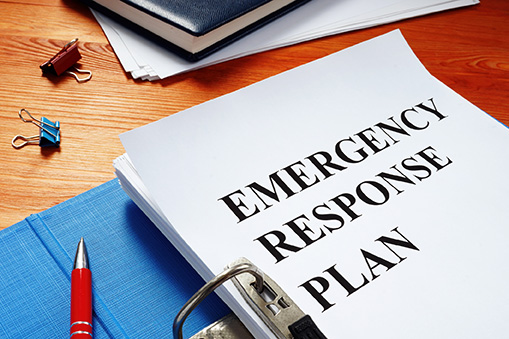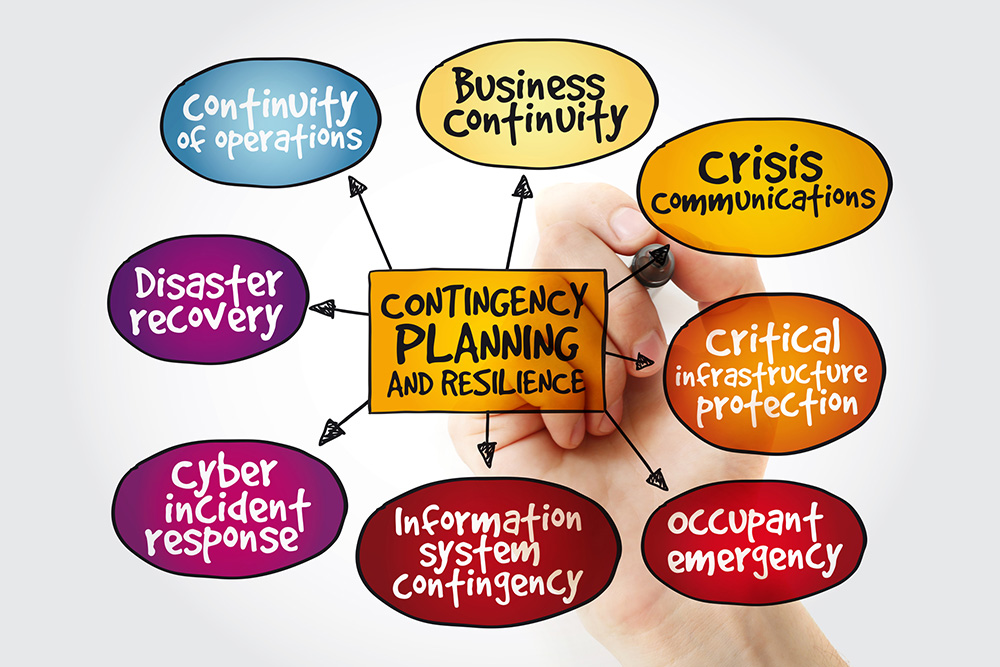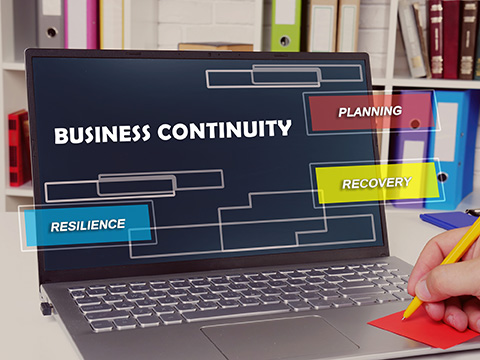Lives and livelihoods are at stake
Plan recovery with resilience, business continuity strategies
By Erik Stromberg *
The island-state must, naturally, depend on its ports — sea and air – for survival and economic development. However, there is a variety of disasters, natural and human-induced, to which Caribbean island-nations are vulnerable. Resilience and business continuity strategies will mitigate the physical, social and economic impacts of threatening disasters.
While the focus of this article is on developing resilience to short-term disasters, the process is applicable to identifying and developing resilience and business continuity strategies for longer-term disruptions in port activities, such as might be caused by sea-level rise.
Preparation for disasters does not usually receive the constant attention it deserves from port and terminal managers. Understandable pressures of day-to-day operations and administration too often relegate disaster planning to the back-burner. If disaster plans have been developed, too often they remain on the shelf, gathering dust and getting outdated, month-by-month. Stale, dated plans do little, if anything, to decrease the vulnerability of the country’s population and national economy to disaster.

Resilience, as a concept, engages disaster planning. It encompasses before, during and after-event strategies. As defined by the US National Academy of Sciences: “Resilience is the ability to prepare and plan for, absorb, recover from, and more successfully adapt to adverse events.”
The 2012 Academy report “Disaster Resilience: A National Imperative” (available from National Academy Press at www.nap.edu) states that, “A culture of resilience provides a way to reduce vulnerability to disasters and their impacts before they occur, with the potential to decrease disasters’ costs and consequences” (emphasis added). A culture of resilience would not allow any dust on the organization’s disaster plan.
Resilience augments, as well as benefits from, an organization’s asset management strategies. Strategic asset management links, through risk analysis, the organization’s physical and natural assets to its strategic and business goals. Port governance is the overarching framework for all port activities. Governance is the institutional setting for port policy development. It also assures emplacement of a management structure that can efficiently and responsively develop and operate resilient facilities critical to the good of the port and the nation.

Resilience culture
What would a resilience culture among Caribbean ports look like? Visioning is the first step in developing a resilient culture. It will describe any required shift in the way the organization currently does business. Visioning a resilient Caribbean port would reveal the following policies, activities and conditions in place:
- A thorough analysis, understanding and prioritization of strategic and business risk to the organization based on disaster scenarios. Required supporting data and contact information has been assembled, organized and is now transparent and accessible across all relevant public and private sector organizations. Collaboration among the island nation’s port stakeholders, as well as among the Caribbean port community, ensures not only a complete and comprehensive risk assessment, but also the necessary coordination and planning among the ports in order to mitigate risk and enhance recovery.
- Based on risk assessment and supporting information, resilience strategies and operational planning have been developed in each nation by public and private sector organizations and are shared within each nation and among the Caribbean community of nations.
- Proactive policies have been developed and needed investments have been made that facilitate preparation, mitigation, response and recovery to disasters.
- Coalitions of port community interests – government, business and non-governmental organizations, internal to each Caribbean island nation; and, externally among the Caribbean port community — have been established and work seamlessly together to provide essential services before, during and after a disaster.
As a result of these policies and strategies, recovery is expedited and the cost of the disaster to the port, local communities and the country’s economy is minimized.
Achieving this end state has a price. However, the cost is modest as compared to the disastrous consequences of having no resilience plan. In the USA, an assessment by the Multi-hazard Mitigation Council found that for every dollar spent on pre-disaster mitigation, four dollars were saved in post-disaster damages.
Business continuity
 The Port of Long Beach, under the direction of Rich Baratta, Director of Risk Management (Baratta@POLB.com), is clearly one of the lead ports in the area of business continuity planning. The following discussion is based on the Port of Long Beach business continuity plan.
The Port of Long Beach, under the direction of Rich Baratta, Director of Risk Management (Baratta@POLB.com), is clearly one of the lead ports in the area of business continuity planning. The following discussion is based on the Port of Long Beach business continuity plan.
Business continuity enhances port resilience. It continues Port operations to the greatest extent possible following a business disruption and avoids cargo diversion that could result from a disruption at the Port. It maintains stakeholder confidence through quick decision-making and promotes a stable operational environment.
Business continuity planning should address all potential hazards. Planning elements should include and address the maintenance of the land and water infrastructure so as to facilitate the efficient and environmentally sound movement of cargo. It should address the maintenance of a safe and secure port environment. Delivery of legal and regulatory obligations and financial requirements are imperatives which must also be addressed.
Business continuity planning contemplates a governance structure and a set of port requirements and actions. The port must address a diverse array of issues in anticipation of a disaster. These issues cross the port’s commercial and public responsibilities. They include:
- Assessing critical Port infrastructure assets (g. roads, bridges, port-owned buildings, wharfs, navigational waterways, storm/sewer systems, and the potable water system).
- Assisting port partners with the assessment of key facilities including docks and wharves, buildings, and power needs.
- Quickly deploying resources to implement pre-determined work-around strategies to overcome impacted critical infrastructure assets (g. deploy a detour route for an impacted bridge).
- Compiling information regarding critical port infrastructure, as well as the operational status and needs of port partners
Business continuity is not emergency, first responder relief. However, it must be fully coordinated with other government agencies. Rapid decision making will be required. And actions undertaken by government agency emergency responders should be integrated with business continuity plans.

Caribbean port staffs are not large and most port professionals have multiple responsibilities. Nonetheless, roles and accountabilities must be assigned if the business continuity plan is to be successfully implemented. The following functional responsibilities should be identified.
- Policy
- Senior Management
- Legal Counsel
- Commission
- Appropriate Government Representative
- Incident Management Team (IMT)
- Key management-level employees from the port authority and major port customers who will report to port senior management
- Recovery Teams
- Subject matter experts from the port, customers, government, consulting community.
Actions taken by the IMT and recovery teams following a physical disaster should include:
- Structural: assessing wharves and critical buildings to determine whether those assets are structurally viable.
- Roadways: assessing critical roads and recommending detour plans around impacted roads.
- Navigational waters – scanning navigational waters for objects that could impede vessel traffic and communicating this information to customers and relevant governmental agencies.
- Identifying alternative navigational access to the country, if possible.
- Sewer/storm system: assessing critical sewer lift stations and storm pump stations and recommending work-arounds, if impacted.
- Electrical system – assessing the electrical system servicing pump stations, sewer lift stations, street lighting, range and sector lights and port buildings and recommending alternative power.
- Potable water system – assessing the potable water system and redirecting water around impacted areas or recommending alternate means of potable water.
Communication
Communication, during and after an incident, is critical to the success of the recovery effort. The port’s Incident Management Team (IMT) lead should be the communication nexus, receiving and generating information regarding response and recovery, while driving the decision-making process.

Outreach to the port’s customers will be important to gather information regarding operational status of their equipment and facilities. Based on those status reports, the IMT will prioritize landside and waterside infrastructure recovery efforts. Ongoing customer and port partner communication is important as the recovery effort advances, notifying of work-arounds and other interim activities.
Communication should not be taken for granted. Disruption in telecom systems should be expected and addressed in plans. A communication plan that provides contact information, including back-up systems, such as encrypted radio, should be developed in the business continuity plan. Face-to-face contact may be the only option is some cases. As Randy Parsons, Director of Security, Port of Long Beach, said at the American Association of Port Authorities (AAPA) Spring Conference (April 5, 2016) in Washington DC: “A disaster is not the time to be exchanging business cards.”
Business continuity plans should be developed and reviewed annually. Goals should be identified every year. Continued training of the port’s IMT should be planned and budgeted. Table top exercises should be developed and undertaken annually, but twice a year is recommended. (Some larger ports in the USA conduct ‘table tops’ quarterly.)
One of the components should encompass a full-scale business continuity exercise that targets specific recovery teams and their response plans. A robust business continuity plan will also address power requirements and alternative power sources. Business continuity planning must comprehensively engage port partners and customers to ensure that risks and potential business impacts are identified and assessed; strategies are defined to address priority risks. By engaging and encouraging the port’s major partners and customers to develop business continuity plans, full coordination with the (port’s) plan becomes easier.
Resources are readily available that can assist with development of resiliency and business continuity planning. The US Transportation Research Board (TRB), referenced above, has commissioned numerous studies in these areas, including, Disaster Resilience, A National Imperative (2012), and Making US Ports Resilient (National Cooperative Freight Research Program Study, Report 30, 2014). These studies are available through National Academies Press, 500 Fifth Street, NW, Keck 360, Washington, DC 20001; (800) 624-6242 or (202) 334-3313; http://www.nap.edu.
AAPA through its Security Committee addresses port resilience strategies. The AAPA Security Committee chairman is Joe Lawless, Director Maritime Security, MassPort, jlawless@massport.com). Rich Baratta, Director of Risk Management, Port of Long Beach, is an excellent resource for business continuity planning and risk assessment (baratta@polb.com). AAPA Headquarters staff is always available to facilitate answers to your questions (Rex Sherman, rsherman@aapa-ports.org). []
- First published: June 1, 2016

* Erik Stromberg is Executive Director of the Centre for Advances in Port Management at Lamar University, Beaumont, Texas. He is former CEO of the American Association of Port Authorities (AAPA); and, previously, head of the North Carolina State Ports Authority. Contact: rolferikstromberg@gmail.com





